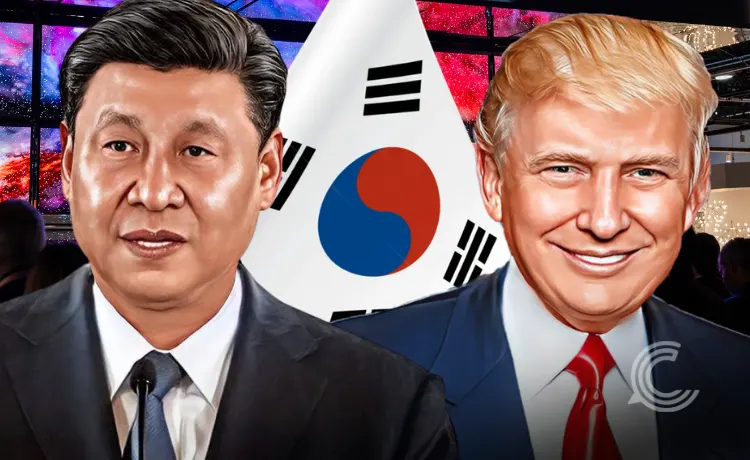Xi Jinping and Donald Trump Forge a Fragile Trade Truce in South Korea

Key Points:
- President Donald Trump announced a reduction in U.S. tariffs on Chinese goods, averting a threatened steep hike, in exchange for commitments from China on key issues
- China reportedly agreed to crack down on the export of fentanyl precursor chemicals and to defer previously threatened export controls on rare earth minerals
- The deal framework includes a Chinese commitment to resume substantial purchases of American soybeans and other agricultural products.
The highly anticipated bilateral meeting between U.S. President Donald Trump and Chinese President Xi Jinping in Busan, South Korea, on the sidelines of the Asia-Pacific Economic Cooperation (APEC) summit, concluded with cautious optimism for a de-escalation in the ongoing US-China Trade Relations conflict. The leaders’ first in-person talks since the American leader’s return to the White House aimed to stabilize ties after months of escalating tariffs and economic threats.
The October 30 meeting in Busan, a port city south of the APEC summit’s main venue, was a crucial moment for global economic stability. For months, the world’s two largest economies have been locked in a tit-for-tat tariff war, which had begun to strain global supply chains and rattled financial markets.The stakes were particularly high as a previous tariff truce was set to expire, with the U.S. having threatened an additional 100% tariff on certain Chinese goods.
President Trump struck a conciliatory tone upon meeting Xi, saying, “President Xi is a great leader of a great country, and I think we’re going to have a fantastic relationship for a long period of time,” as reported by Reuters. Despite the cordial remarks, Trump also acknowledged Xi as a “very tough negotiator,” indicating the complexity of the discussions.
Trade Concessions and Framework Agreement
Following the talks, which lasted just over an hour and a half, President Trump announced that the U.S. would reduce its combined tariff rate on certain Chinese imports. This rollback in protectionist measures came as a direct result of concessions from the Chinese side.
The most immediate relief for global markets was the mutual de-escalation of tariff threats. U.S. Treasury Secretary Scott Bessent had previously indicated that a “substantial framework” was being developed, which included averting the threatened 100% U.S. tariff hike.
Additionally, China reportedly agreed to postpone its recent export controls on rare earth minerals, which are critical for high-tech industries, for a year while the issue is re-examined, as detailed by the Associated Press (AP).
Addressing Key U.S. Concerns
A significant component of the new framework focused on issues beyond traditional trade balances. President Trump highlighted that the U.S. tariff reduction was partly in exchange for China’s commitment to curb the flow of precursor chemicals used to manufacture fentanyl, a synthetic opioid that has fueled an overdose crisis in the U.S. This linkage of trade and public health issues signals an expansion of the negotiating leverage used by Washington.
Furthermore, the framework includes a promise from Beijing to resume substantial purchases of American agricultural products, specifically soybeans. The halt of U.S. soybean purchases by China in the preceding months had deeply hurt American farmers. The immediate recommencement of these purchases is a key confidence-building measure.
“We have a great understanding,” Trump stated following the meeting, according to the AP, indicating a successful personal and working dynamic with his counterpart. China’s state news agency, Xinhua, also reported Xi Jinping telling Trump that the two countries’ trade teams had reached “basic consensus on addressing our basic concerns,” as cited by Reuters.
Lingering Strategic Rivalry
Despite the successful short-term stabilization of US-China Trade Relations, analysts caution against viewing the outcome as a resolution to the deeper, long-term strategic rivalry between the two powers
“Both sides are managing volatility, calibrating just enough cooperation to avert crisis while the deeper rivalry endures,” said Craig Singleton of the Foundation for Defense of Democracies, as quoted by the AP. Tensions persist over technology dominance, intellectual property, and geopolitical flashpoints like Taiwan and the South China Sea.
Minutes before the meeting, for instance, President Trump made an unannounced post on social media regarding U.S. nuclear weapons testing, a move interpreted by some as a last-minute show of force. The leaders, however, reportedly avoided discussing the highly sensitive issue of Taiwan during their talks.



